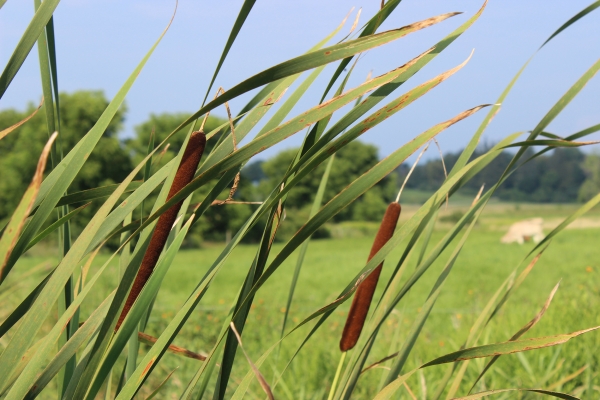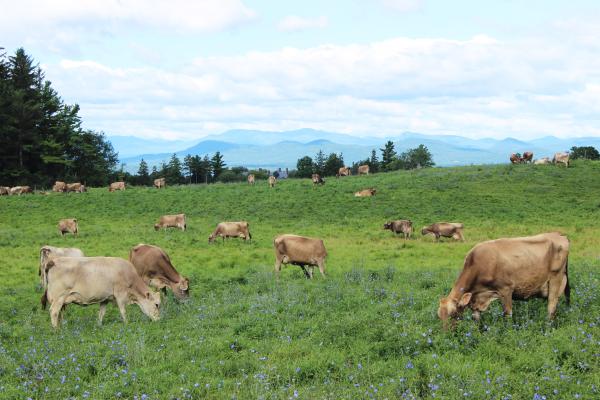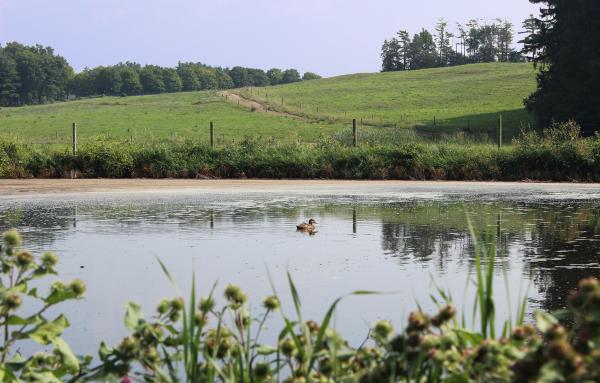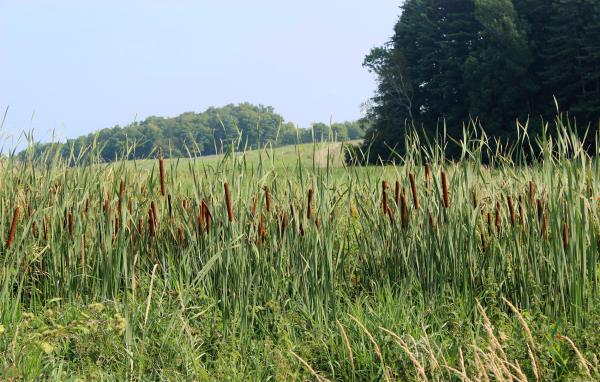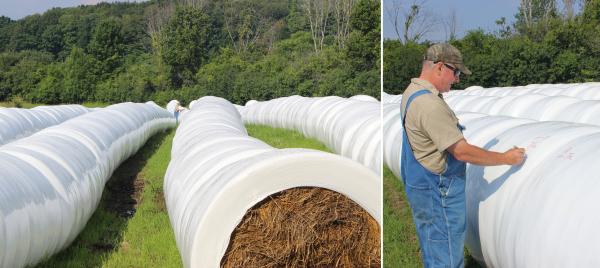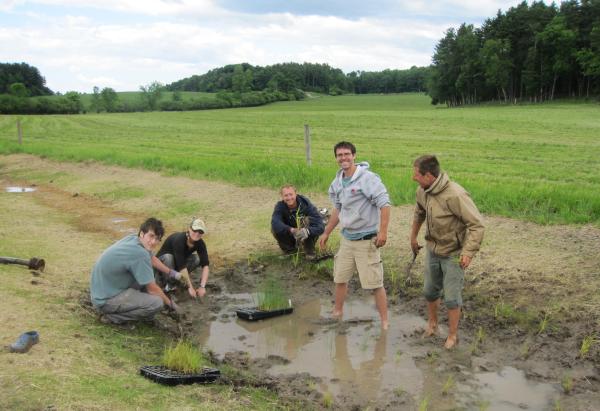Protecting Water Quality at the Farm
Since then we have learned so much more about our impacts, and have realized that protecting water quality is an ongoing process: we need to constantly evaluate our operation and be mindful of the consequences of our actions. This awareness did not come without some difficult conversations with concerned neighbors and other stakeholders. But it led to a big shift in our attitude. We realized that we needed to do better, we needed to have a plan, and we needed to document our activities to continually improve our nutrient management.
As we constantly work to improve, here are some of the major changes we have made since I came on board in 1996:
- We maintain an 800-foot buffer between our grazing pastures and shoreline. Vermont’s current Best Management Practices (BMPs) to help control farm runoff require a 25-50 ft buffer.
- We fence off all ditches and seasonal streams from livestock. (This is not required by current BMPs.)
- We don’t spread manure within 100 feet or more of the lake, or near sensitive drainage areas.
- We adopted a nutrient management plan in 2006. The plan, which we update every year, helps us use the manure resource we have more carefully. Nutrient management plans rely on soil and manure tests to help calculate and balance the amount of nutrients applied to each field with the nutrient uptake needs of the crop/forage. In our case, we do soil tests every three years; and test the manure every time we spread it.
- We also expanded our manure storage in 2006 to accommodate 7-8 months of manure, so we do not have to spread in the early spring or late fall.
- We built a constructed wetland at the dairy to filter runoff from the site before the water flows into the natural wetland of Elm Swamp. We reworked the main drainage ditch from the dairy so runoff takes a longer, slower path to the constructed wetland. (2009)
Part of our constructed wetland, looking back towards pastures and cow lane. - We moved our pack manure composting site farther from the lake and drainage areas. (2010)
- We changed how we handle dairy feed: we now use wrapped round bales instead of large silage piles. (2011)
We mark where and when the round bales were harvested as part of a separate study we're conducting on forage quality. - We installed rain gardens along the main pedestrian path for additional runoff treatment. (2012)
Dana Bishop, the Farm's Natural Resources Assistant Manager (wearing hat), getting some help planting various wetland grasses along the main pedestrian path back in 2012. - Over the years, we’ve participated in several studies and UVM student research projects specifically looking at water quality.
- We have organized all of the water quality testing results to date by location along each of the different watershed drainage streams on the farm. As we continue to gather data each year, this allows us to better understand and evaluate how our various land uses (forest, farm fields, wetlands, etc.) and how our land management decisions impact water quality as the water flows from the the top of each watershed down to the lake. (2013 to date)
Everyone’s actions impact the lake, whether that’s spreading manure, applying road salt, ignoring a car’s oil leak, not picking up after your dog, or fertilizing a lawn. As a farm, however, and as a nonprofit educating for sustainability, we have special responsibilities to be good stewards. We continue to look at all of our practices and know that we can always do better. We will never get it perfect because we do not control the environment we work in, but I know we can produce good, healthy food and protect the lake at the same time.

